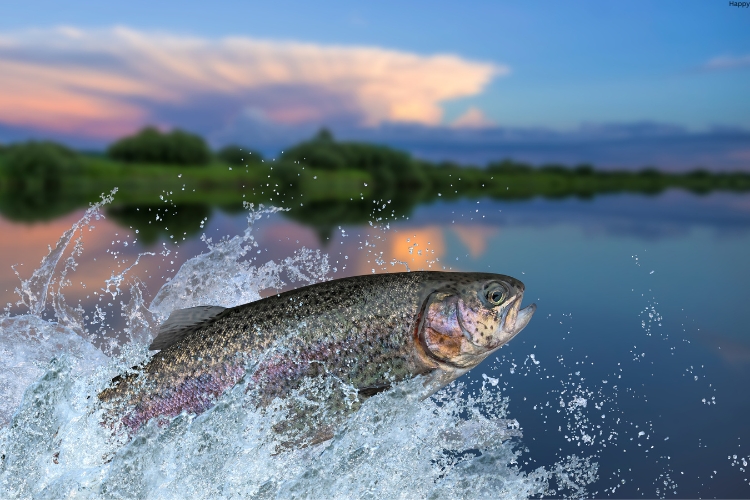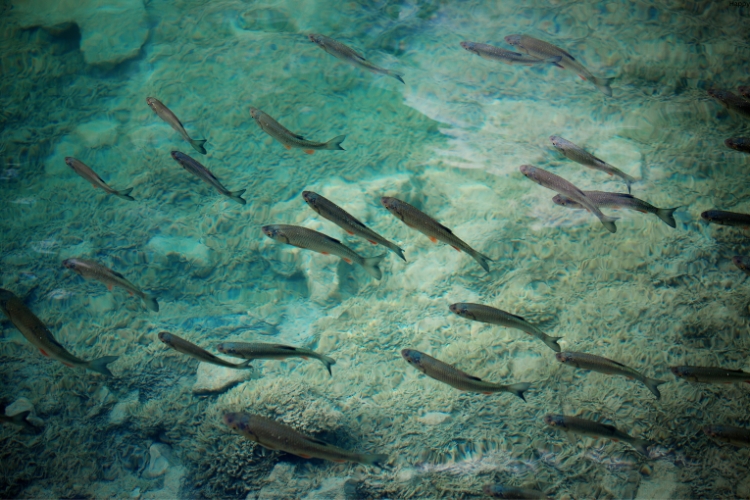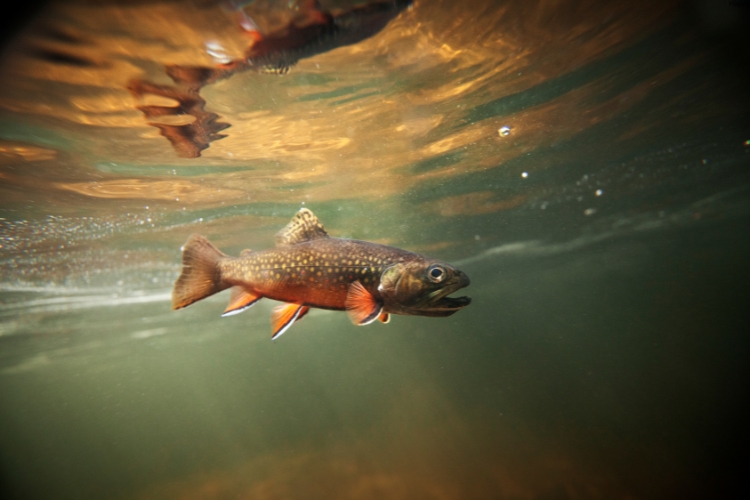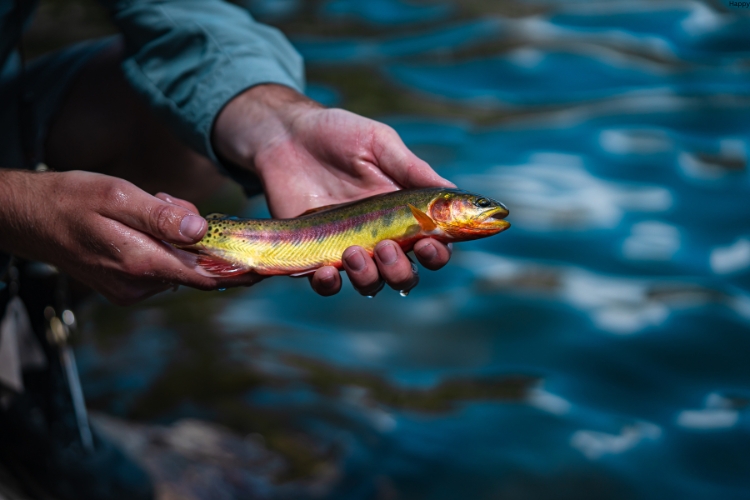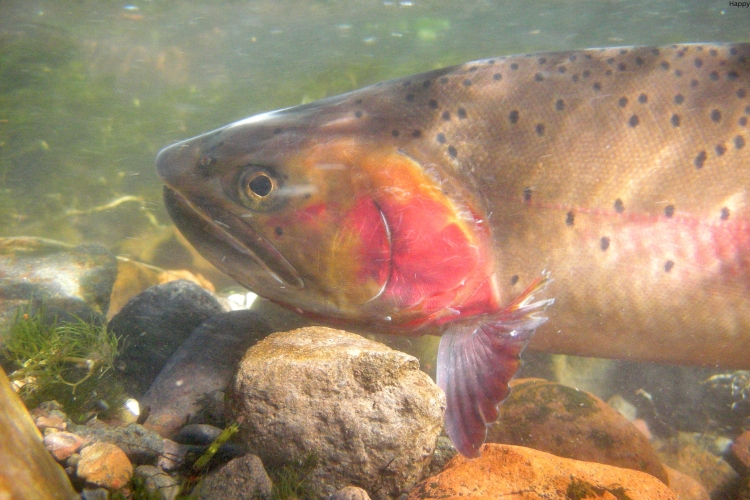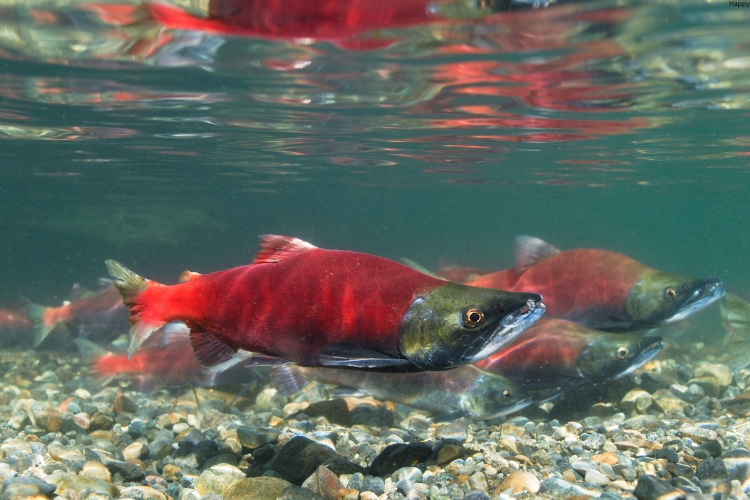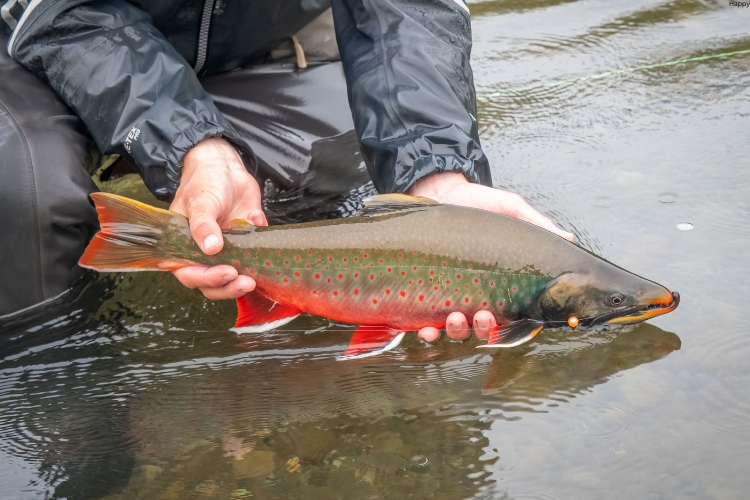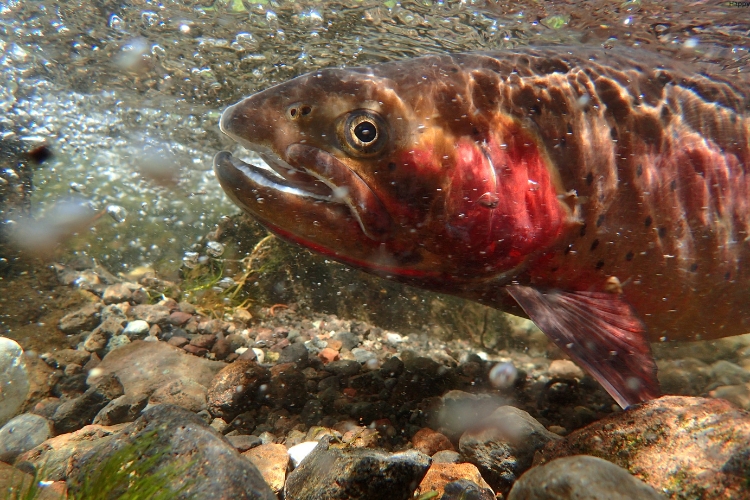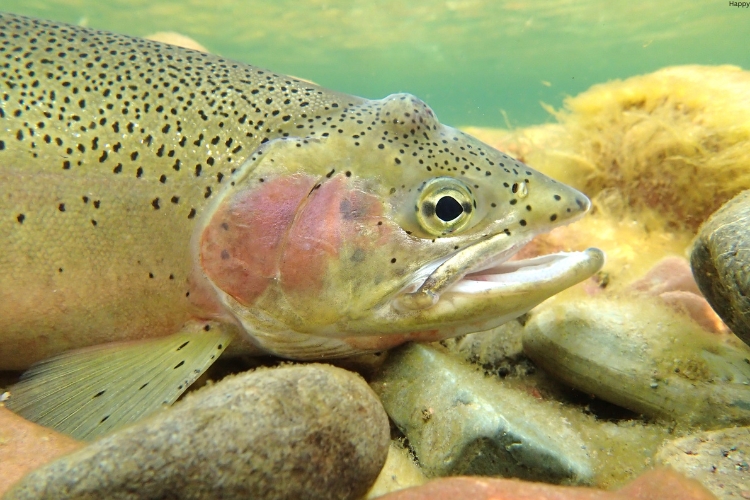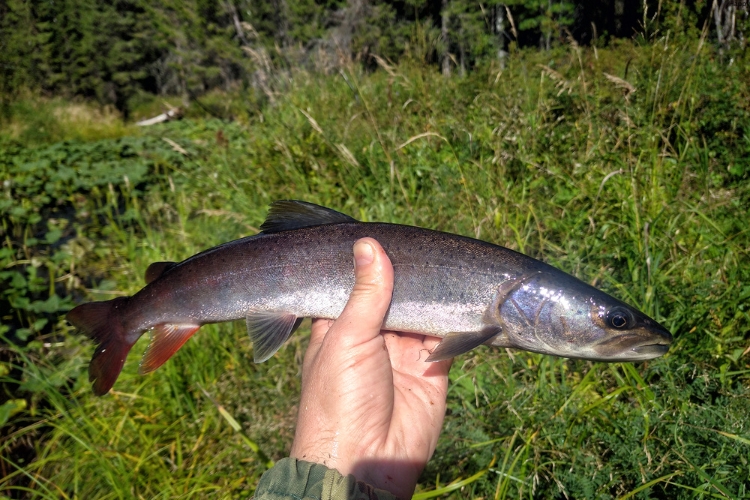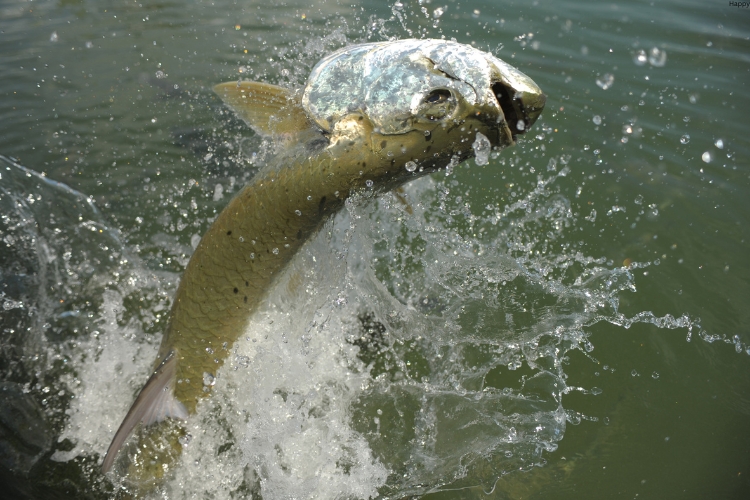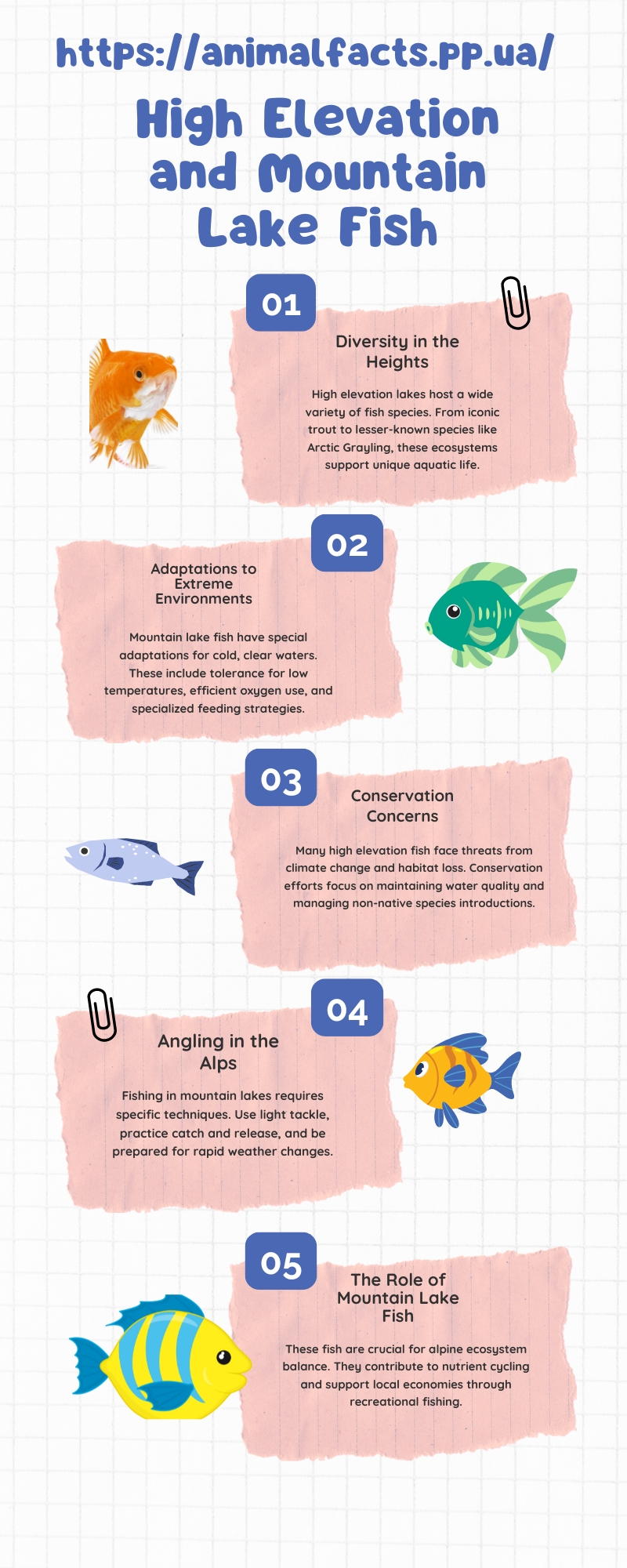High elevation and mountain lakes offer some of the most breathtaking fishing experiences in the world. These pristine environments are home to a diverse array of fish species that have adapted to the unique conditions of cold, clear waters and shorter growing seasons.
In this blog post, we’ll explore 25 fish species that thrive in these elevated aquatic habitats, their characteristics, and why they’re important to these ecosystems.
Key Takeaways
- High elevation and mountain lakes host a diverse array of fish species adapted to cold, clear waters and challenging environmental conditions.
- The 25 fish species discussed range from well-known trout varieties to lesser-known species like the Alpine Stickleback, showcasing the biodiversity of these ecosystems.
- Many of these fish species, such as the Golden Trout and Bull Trout, have specific habitat requirements and are sensitive to environmental changes.
- Several species, including the Golden Mahseer and Taimen, are facing conservation challenges due to habitat loss, overfishing, and climate change.
- Hybrid species like Splake and Tiger Trout are sometimes introduced to mountain lakes for sport fishing and population control.
- High elevation lake fish play crucial roles in their ecosystems, including maintaining ecological balance and contributing to nutrient cycling.
- These fish species often have significant economic value through recreational fishing and cultural importance for local communities.
- Conservation efforts are critical for protecting these unique species and their habitats, including managing non-native species introductions and implementing sustainable fishing practices.
- Anglers fishing in high elevation lakes should be aware of the specific species present, use appropriate techniques, and follow local regulations to ensure sustainable fishing practices.
- Climate change poses a significant threat to many of these fish species, potentially altering their habitats and disrupting their life cycles.
- Understanding these fish species and their ecosystems is crucial for effective conservation and management strategies to protect these valuable natural resources for future generations.
Understanding High Elevation and Mountain Lake Ecosystems
Before diving into our list of fish species, it’s crucial to understand the unique characteristics of high elevation and mountain lake ecosystems:
- Colder water temperatures
- Higher oxygen levels
- Shorter growing seasons
- Limited food sources
- Extreme weather conditions
- Isolation from other water bodies
These factors have led to the evolution and adaptation of specific fish species that can thrive in these challenging environments.
The 25 High Elevation and Mountain Lake Fish Species
1. Rainbow Trout (Oncorhynchus mykiss)
Rainbow trout are perhaps the most iconic fish of mountain lakes. Known for their distinctive coloration and fighting spirit, these fish are prized by anglers worldwide.
Key characteristics:
- Olive-green to blue-gray body with a pink stripe along the side
- Can grow up to 30 inches in length
- Prefer water temperatures between 55-65°F (13-18°C)
2. Brook Trout (Salvelinus fontinalis)
Despite its name, the brook trout is actually a char species. It’s native to eastern North America but has been introduced to many mountain lakes around the world.
Key characteristics:
- Dark green body with distinctive light worm-like markings
- Red spots surrounded by blue halos on the sides
- Typically 6-8 inches in length in mountain lakes
3. Brown Trout (Salmo trutta)
Originally from Europe, brown trout have been successfully introduced to mountain lakes across the globe. They’re known for their wariness and challenging nature for anglers.
Key characteristics:
- Golden-brown to olive color with black and red spots
- Can grow larger than rainbow trout in some environments
- More tolerant of warmer waters compared to other trout species
4. Lake Trout (Salvelinus namaycush)
Also known as mackinaw, lake trout are the largest of the char family and are often found in the deepest parts of mountain lakes.
Key characteristics:
- Dark green to gray body with light spots
- Can live for decades and grow to impressive sizes
- Prefer very cold, deep waters
5. Golden Trout (Oncorhynchus aguabonita)
Native to the high mountain lakes of California’s Sierra Nevada, golden trout are prized for their stunning coloration.
Key characteristics:
- Bright gold sides with red-orange belly
- Typically smaller than other trout species
- Adapted to high-altitude, low-productivity waters
6. Arctic Grayling (Thymallus arcticus)
With its distinctive large dorsal fin, the Arctic grayling is a unique sight in high-elevation lakes of North America and Europe.
Key characteristics:
- Large, sail-like dorsal fin
- Silvery to light purple body
- Prefers cold, clear waters
7. Cutthroat Trout (Oncorhynchus clarkii)
Named for the distinctive red slash under their lower jaw, cutthroat trout are native to western North America and have several subspecies adapted to different mountain ranges.
Key characteristics:
- Red or orange slash under the lower jaw
- Varies in coloration depending on subspecies
- Generally smaller than rainbow trout in mountain lakes
8. Bull Trout (Salvelinus confluentus)
Bull trout are a species of concern due to habitat loss and competition from introduced species. They require the coldest and cleanest waters of all salmonids.
Key characteristics:
- Olive-green to brown body with pale yellow spots
- No black spots on the dorsal fin
- Can grow quite large in lake environments
9. Mountain Whitefish (Prosopium williamsoni)
Often overlooked by anglers, mountain whitefish are an important part of many high-elevation lake ecosystems in western North America.
Key characteristics:
- Silvery sides with olive-green back
- Small mouth and pointed snout
- Important forage fish for larger predatory species
10. Arctic Char (Salvelinus alpinus)
Found in the coldest and deepest lakes of the northern hemisphere, Arctic char are well-adapted to extreme conditions.
Key characteristics:
- Variable coloration, often with pink to red spots on a darker background
- Can tolerate near-freezing water temperatures
- Long-lived species, sometimes reaching 40 years old
11. Kokanee Salmon (Oncorhynchus nerka)
Kokanee are the landlocked form of sockeye salmon, adapted to life in freshwater lakes without access to the ocean.
Key characteristics:
- Silver-blue color, turning bright red during spawning
- Typically smaller than their anadromous counterparts
- Important prey species for larger predatory fish
12. Splake (Salvelinus namaycush × Salvelinus fontinalis)
A hybrid between lake trout and brook trout, splake are often stocked in mountain lakes to provide angling opportunities.
Key characteristics:
- Appearance is a mix between lake trout and brook trout
- Faster-growing than either parent species
- Sterile, so they don’t reproduce in the wild
13. Tiger Trout (Salmo trutta × Salvelinus fontinalis)
Another hybrid species, tiger trout are a cross between brown trout and brook trout. They’re prized for their unique appearance and fighting ability.
Key characteristics:
- Distinctive tiger-like stripes on a dark background
- Combine the best traits of both parent species
- Sterile, making them useful for population control
14. Dolly Varden (Salvelinus malma)
Often confused with Arctic char, Dolly Varden are found in high-elevation lakes across the northern Pacific rim.
Key characteristics:
- Olive-green to brown body with red or pink spots
- Can be anadromous or landlocked
- Important cultural and ecological species in many regions
15. Golden Mahseer (Tor putitora)
Found in the high-elevation lakes and rivers of the Himalayas, the golden mahseer is a prized game fish and an important cultural symbol.
Key characteristics:
- Golden-yellow to olive-green body
- Can grow to impressive sizes in lake environments
- Threatened by overfishing and habitat loss
16. Yellowstone Cutthroat Trout (Oncorhynchus clarkii bouvieri)
Native to the Yellowstone Lake ecosystem, this subspecies of cutthroat trout is an important indicator of ecosystem health.
Key characteristics:
- Yellow-gold to green body with black spots
- Red slash under the lower jaw
- Threatened by introduced lake trout in Yellowstone Lake
17. Colorado River Cutthroat Trout (Oncorhynchus clarkii pleuriticus)
Another subspecies of cutthroat trout, this fish is native to the high-elevation lakes and streams of the Colorado River basin.
Key characteristics:
- Bright red-orange slash under the lower jaw
- More colorful than other cutthroat subspecies
- Subject of intensive conservation efforts
18. Gila Trout (Oncorhynchus gilae)
Native to high-elevation streams and lakes in New Mexico and Arizona, the Gila trout is a threatened species that’s slowly recovering through conservation efforts.
Key characteristics:
- Yellowish-brown body with black spots
- Golden yellow belly
- Adapted to small, isolated mountain water bodies
19. Lake Chub (Couesius plumbeus)
While not as glamorous as trout, lake chubs play a crucial role in many high-elevation lake ecosystems as a forage fish.
Key characteristics:
- Small, silvery fish with a dark lateral line
- Important prey species for larger fish
- Adapted to a wide range of water conditions
20. Paiute Cutthroat Trout (Oncorhynchus clarkii seleniris)
One of the rarest trout species in North America, the Paiute cutthroat is native to a few high-elevation lakes and streams in California’s Sierra Nevada.
Key characteristics:
- Lacks the heavy spotting of other cutthroat subspecies
- Purple hue on the sides
- Subject of intensive conservation efforts
21. Golden Dorado (Salminus brasiliensis)
While not typically associated with mountain lakes, golden dorado can be found in some high-elevation reservoirs in South America.
Key characteristics:
- Bright golden color with powerful, streamlined body
- Aggressive predator
- Prized game fish in its native range
22. Lenok (Brachymystax lenok)
Found in the high-elevation lakes and rivers of northeastern Asia, lenok are an important species for both recreational fishing and local subsistence.
Key characteristics:
- Elongated body with a pointed snout
- Coloration varies from silver to reddish-brown
- Adapted to cold, fast-flowing waters
23. Taimen (Hucho taimen)
The largest member of the salmonid family, taimen can be found in some high-elevation lakes in Mongolia and Russia.
Key characteristics:
- Can grow to massive sizes, over 6 feet in length
- Brownish-red body with dark spots
- Long-lived, sometimes reaching 50 years old
24. Andean Trout (Oncorhynchus mykiss andeanensis)
A subspecies of rainbow trout native to the high-elevation lakes and streams of the Andes Mountains.
Key characteristics:
- Similar appearance to rainbow trout but with some unique adaptations
- Important for both recreational fishing and local economies
- Facing threats from climate change and introduced species
25. Alpine Stickleback (Gasterosteus aculeatus)
While not typically sought after by anglers, Alpine sticklebacks are an interesting species found in some high-elevation lakes in Europe.
Key characteristics:
- Small fish with distinctive spines on their back
- Can tolerate a wide range of environmental conditions
- Important indicator species for ecosystem health
| Species | Native Range | Conservation Status | Max Size |
|---|---|---|---|
| Rainbow Trout | Western North America | Least Concern | 30 inches |
| Brook Trout | Eastern North America | Least Concern | 25 inches |
| Brown Trout | Europe | Least Concern | 40 inches |
| Lake Trout | North America | Least Concern | 50 inches |
| Golden Trout | California, USA | Near Threatened | 20 inches |
| Arctic Grayling | Northern Hemisphere | Least Concern | 30 inches |
| Cutthroat Trout | Western North America | Varies by subspecies | 40 inches |
| Bull Trout | Western North America | Vulnerable | 40 inches |
| Mountain Whitefish | Western North America | Least Concern | 20 inches |
| Arctic Char | Northern Hemisphere | Least Concern | 40 inches |
| Kokanee Salmon | Western North America | Least Concern | 25 inches |
| Splake | Artificially created | N/A | 35 inches |
| Tiger Trout | Artificially created | N/A | 30 inches |
| Dolly Varden | Northern Pacific | Least Concern | 30 inches |
| Golden Mahseer | Himalayas | Endangered | 110 inches |
| Yellowstone Cutthroat | Yellowstone region | Near Threatened | 30 inches |
| Colorado River Cutthroat | Colorado River Basin | Threatened | 25 inches |
| Gila Trout | Southwest USA | Threatened | 20 inches |
| Lake Chub | North America | Least Concern | 10 inches |
| Paiute Cutthroat | California, USA | Threatened | 20 inches |
| Golden Dorado | South America | Least Concern | 60 inches |
| Lenok | Northeast Asia | Vulnerable | 35 inches |
| Taimen | Asia | Vulnerable | 80 inches |
| Andean Trout | Andes Mountains | Data Deficient | 30 inches |
| Alpine Stickleback | Europe | Least Concern | 4 inches |
Conservation and Management of High Elevation Lake Fish
The unique and often fragile ecosystems of high elevation and mountain lakes require careful management to maintain healthy fish populations. Some key considerations include:
- Protecting water quality and habitats
- Managing non-native species introductions
- Monitoring climate change impacts
- Implementing sustainable fishing practices
- Supporting research and conservation efforts
Importance of High Elevation Lake Fish
High elevation and mountain lake fish play crucial roles in their ecosystems:
- Ecological balance: As both predators and prey, these fish help maintain the balance of aquatic ecosystems.
- Nutrient cycling: Fish contribute to nutrient cycling in these often nutrient-poor environments.
- Biodiversity: Many of these species are unique to their specific habitats, contributing to global biodiversity.
- Economic value: Recreational fishing for these species can be an important economic driver for mountain communities.
- Cultural significance: Many of these fish hold cultural importance for indigenous and local communities.
Facing High Elevation Lake Fish
Despite their adaptations, high elevation and mountain lake fish face numerous challenges:
- Climate change and warming waters
- Introduced non-native species
- Habitat loss and degradation
- Overfishing
- Pollution and acid rain
Fishing Tips for High Elevation Lakes
For anglers interested in pursuing these unique fish species, consider the following tips:
- Use light tackle and lines due to the clear water
- Practice catch and release to maintain populations
- Be prepared for rapidly changing weather conditions
- Respect local fishing regulations and seasons
- Learn about the specific species in the lake you’re fishing
Conclusion
High elevation and mountain lake fish represent a diverse and fascinating group of species that have adapted to some of the most challenging aquatic environments on Earth.
From the iconic rainbow trout to the lesser-known mountain whitefish, each species plays a vital role in these unique ecosystems.
As anglers, conservationists, and nature enthusiasts, it’s our responsibility to appreciate, protect, and sustainably manage these incredible fish and their habitats for future generations to enjoy.

